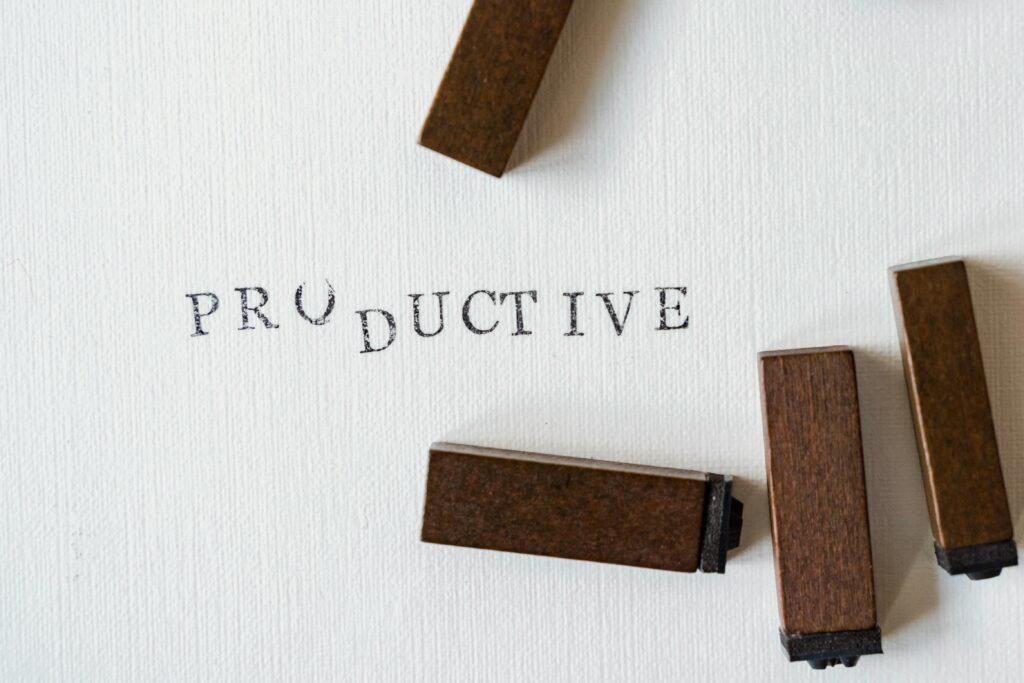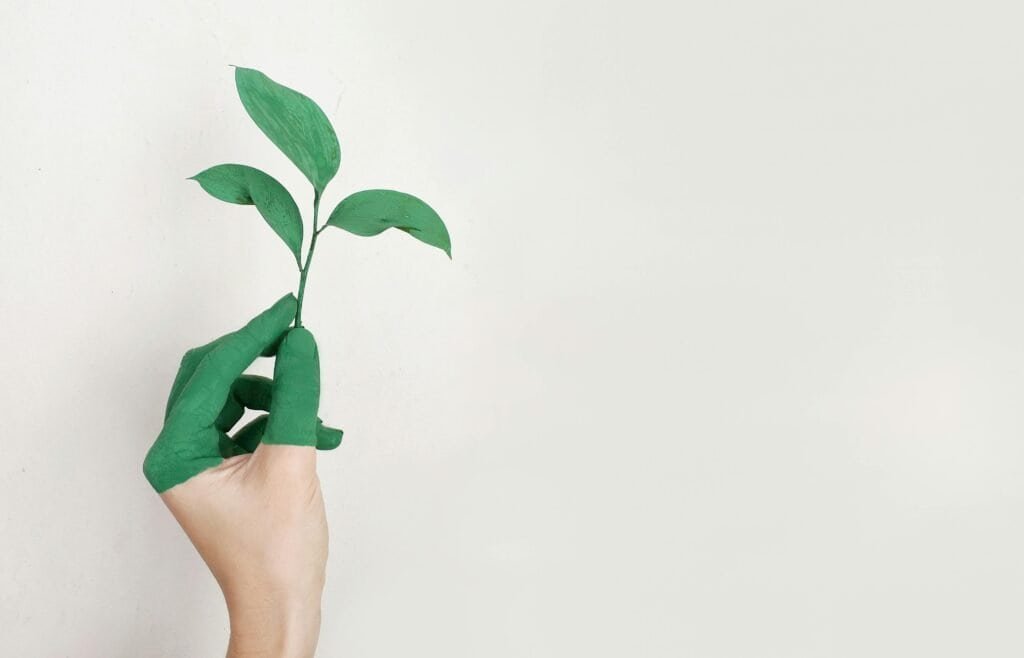Physical Address
304 North Cardinal St.
Dorchester Center, MA 02124
Physical Address
304 North Cardinal St.
Dorchester Center, MA 02124

In today’s fast-paced world, the concept of mindful productivity has garnered significant attention among professionals and individuals alike. Mindful productivity involves the integration of mindfulness practices with time-tested productivity techniques to cultivate a balanced approach to work and life. Unlike traditional productivity methods that focus exclusively on efficiency, mindful productivity emphasizes being present and conscious in one’s work.
At its core, mindful productivity recognizes the importance of mental clarity and well-being. By maintaining an acute awareness of our thoughts, emotions, and actions, we can handle tasks more effectively while reducing stress. This approach encourages us to focus on the present moment, allowing for improved concentration and the ability to manage distractions more adeptly.

The growing interest in mindfulness and productivity is a reflection of society’s increasing need to find equilibrium in an overwhelmingly hectic environment. Amid the constant influx of emails, meetings, and notifications, many are seeking ways to enhance their productivity without sacrificing their mental health. Mindful productivity offers a viable solution by fostering a work ethic that supports both high performance and personal well-being.
Implementing mindful productivity can lead to numerous benefits, including heightened focus, better time management, and a more profound sense of satisfaction in one’s work. By prioritizing mindfulness, individuals can create a productive workspace that is not only efficient but also harmonious and fulfilling. As we delve deeper into the principles of mindful productivity, we uncover techniques that can transform our approach to work, enabling us to navigate our responsibilities with greater ease and purpose.
The way you start your day can significantly determine the trajectory of your productivity and overall well-being. Engaging in mindful morning rituals offers a structured yet peaceful approach to kickstart your day, imbuing it with purpose and calm. These rituals can encompass practices such as meditation, journaling, or mindful breathing exercises, which collectively foster a sense of clarity and focus.
Meditation, for instance, serves as a powerful tool in grounding oneself. A short 5 to 10-minute session of focused meditation can help clear the mind and release any overnight tension, preparing you mentally for the tasks ahead. This practice encourages mindfulness, which is the cornerstone of productive habits.

In addition to meditation, journaling can be an excellent way to articulate your thoughts and set your daily intentions. By writing down your goals for the day, you create a roadmap that guides your actions, making your day more intentional and less susceptible to distractions. Journaling also provides a moment for self-reflection, allowing you to acknowledge any lingering stressors and address them proactively.
Mindful breathing exercises, such as deep diaphragmatic breaths, further enhance the efficacy of your morning ritual by promoting relaxation. Taking just a few deep breaths can improve oxygen flow to the brain, thus enhancing cognitive function and concentration. This practice can be seamlessly incorporated into your routine, offering a quick yet effective method to center your mind.
Ultimately, dedicating time each morning to these mindful practices sets a positive tone that can ripple through the rest of your day. A calm and intentional morning routine not only boosts productivity but also diminishes stress, enabling you to navigate your day with a serene sense of control and purpose. Integrating these morning rituals into your daily routine can thus be a transformative step toward mindful productivity.
In today’s fast-paced work environments, multitasking is often hailed as a productivity booster; however, research indicates that single-tasking, or focusing on one task at a time, offers substantial advantages over this common practice. The primary benefit of single-tasking is the significant increase in work quality. By dedicating focused attention to one task, individuals can engage deeply with their work, leading to improved outcomes and reduced errors. Unlike multitasking, which splits cognitive resources, single-tasking allows for a thorough and meticulous approach to each task, minimizing the likelihood of oversights and enhancing overall performance.
Furthermore, single-tasking contributes to a more mindful work environment. When we concentrate on a single activity, we are better able to stay present in the moment, which reduces stress and increases satisfaction with the work being done. This mindful approach fosters clarity and tranquility, as opposed to the often chaotic and stressful nature of juggling multiple tasks simultaneously. As employees feel less overwhelmed, their ability to produce high-quality work improves, and the overall workplace atmosphere becomes more positive.

To implement single-tasking effectively, individuals can adopt several strategies in their daily routines. First, prioritize tasks by creating a daily to-do list and focusing on completing each item one at a time. This approach ensures that important tasks receive the full attention they require. Second, limit distractions by establishing a dedicated workspace and utilizing tools such as noise-canceling headphones or time management apps. These tools can help maintain focus and keep interruptions at bay. Third, practice time-blocking, a method where specific blocks of time are allocated for distinct tasks, allowing for dedicated periods of focused work.
By adopting these strategies, the shift from multitasking to single-tasking can be seamless, leading to a marked improvement in productivity and work quality. As individuals embrace single-tasking, they will likely discover a more mindful and efficient approach to their professional responsibilities, ultimately fostering a more productive and satisfying work environment.
In the quest for achieving high levels of productivity, people often overlook the significance of taking mindful breaks. As paradoxical as it might seem, stepping away from your work can actually be one of the most effective ways to sustain long-term concentration and prevent burnout. Mindful breaks serve as a mental reset, offering rejuvenation and reenergizing the mind, thereby enhancing overall productivity.
Mindful breaks can take various forms, tailored to individual preferences and needs. One of the most effective types is engaging in short meditation sessions. Meditation, even for just a few minutes, can help clear the mind, reduce stress, and improve concentration. By focusing on your breath or a specific mantra, you can bring yourself back to the present moment, shedding distractions and mental clutter.
Another beneficial type of mindful break is stretching exercises. Physical movement, particularly stretching, helps to relieve tension accumulated from long hours of sitting. It not only revitalizes the body but also boosts mental clarity. Simple stretches targeting the neck, shoulders, and back can significantly enhance your posture and physical well-being.

Equally important is the act of simply stepping away from the workspace. This could mean taking a walk outside, spending a few minutes in nature, or even just shifting your focus to a different environment within your home or office. Changing your surroundings can refresh your perspective and foster creativity, allowing you to return to your tasks with renewed focus.
Scientific research supports the benefits of mindful breaks. Studies have shown that regular intervals of rest can improve cognitive function, augment decision-making skills, and heighten overall mental health. By incorporating these mindful breaks into your daily routine, you can create a balanced workflow that maximizes productivity while mitigating the risks of burnout.
Ultimately, the power of mindful breaks lies in their ability to provide a sense of balance and mental clarity. By integrating short meditations, stretches, or simply stepping away into your day, you not only safeguard your mental well-being but also cultivate a more efficient and sustainable approach to productivity.
Mindful goal setting and planning are pivotal in enhancing productivity while maintaining mental clarity and focus. By establishing intentional and well-thought-out objectives, individuals can align their efforts with both short-term ambitions and long-term aspirations, ensuring that their actions and energy are purposefully directed.
One of the most effective techniques for setting mindful goals is the SMART framework. This method involves creating goals that are Specific, Measurable, Achievable, Relevant, and Time-bound. Specific goals provide a clear direction, eliminating ambiguity. Measurable goals allow for tracking progress and ensuring that milestones are met. Achievable goals ensure that ambitions are realistic and attainable, preventing discouragement. Relevant goals align with personal values and long-term vision, ensuring that time and effort are invested wisely. Lastly, Time-bound goals set a deadline, providing a sense of urgency and motivation.

Mindful goal setting goes beyond the creation of goals; it involves regular planning and reflection. Planning methods that incorporate mindfulness include daily review sessions, where individuals can assess their accomplishments, adjust their strategies, and set intentions for the following day. Such practices encourage continuous self-improvement and adherence to one’s goals.
Reflection is another vital component of mindful planning. Allocating time for reflection enables individuals to internalize lessons learned and celebrate achievements, no matter how small. This process fosters an awareness of one’s growth trajectory and can highlight areas requiring further attention. By focusing on incremental progress, individuals can maintain motivation and avoid being overwhelmed by the enormity of their ambitions.
In essence, mindful goal setting and planning create a structured yet flexible approach to productivity. By intertwining mindfulness with goal-setting techniques, individuals can pursue their objectives with clarity, intention, and sustained motivation, ultimately leading to more fulfilling and impactful results.
Minimalism, when applied to productivity, can significantly enhance both efficiency and mental clarity. By focusing on the essentials and eliminating non-essential elements, individuals can cultivate a work environment free from unnecessary clutter and distractions. This approach allows one to harness energy and attention towards tasks that truly matter, thereby fostering productivity.
A minimalist work environment begins with the physical space. Decluttering your workspace can reduce stress and improve focus. Remove items that don’t serve a functional or motivational purpose. Organize essentials such as documents, tools, and office supplies to create a neat and orderly setup. A clean and tidy space not only supports concentration but also invokes a sense of calm and control.

Beyond the physical realm, digital decluttering is equally important. An overabundance of files, emails, and applications can be overwhelming. To counter this, ensure your digital environments are streamlined. Regularly clean up your desktop, manage emails by unsubscribing from non-essential newsletters, and organize files into accessible folders. Utilizing productivity tools to maintain an orderly digital workspace can also play a crucial role in minimizing distractions.
Furthermore, minimalism encourages focusing on essential tasks. Begin by identifying high-priority activities that align with your goals. By concentrating on fewer tasks, you can apply greater effort and achieve higher quality results. This principle advocates for a reduction in multitasking, which often dilutes attention and efficiency, and promotes single-tasking for maximum output.
Actionable tips for adopting minimalist practices include setting clear priorities, practicing routine decluttering, and adopting a mindset that values quality over quantity. Begin each day by outlining three main tasks and aim to complete them before moving on to less critical activities. Regularly evaluate your commitments and decide which ones to keep based on their value and relevance. By incorporating these minimalist principles, individuals can create a more productive and less stressful work environment conducive to achieving success.
Mindful communication plays a pivotal role in enhancing productivity by fostering collaboration and reducing misunderstandings. By emphasizing techniques such as active listening, being fully present in conversations, and articulating thoughts with clarity and conciseness, individuals can significantly improve both personal and team efficiency.
Active listening is fundamental to mindful communication. This involves attentively hearing the speaker without planning responses during their talk. Instead, one focuses entirely on understanding the speaker’s message, both verbal and non-verbal cues. Acknowledging what is being said by nodding or providing feedback reaffirms the speaker’s value, which enhances engagement and productivity.

Furthermore, being fully present in conversations is essential. This requires setting aside distractions and devoting attention to the current interaction. Whether through maintaining eye contact or offering undivided consideration, being present ensures a more productive exchange of ideas and reduces potential misunderstandings. Additionally, such engagement fosters a sense of respect and empathy, furthering productive connections.
Clear and concise expression of thoughts is another cornerstone of mindful communication. Communicating in a straightforward manner without ambiguity or excessive fluff helps others grasp the message quickly and accurately. Utilizing specific and deliberate language aids in minimizing confusion and streamlines collaboration efforts, thereby boosting collective productivity.
Effective communication also promotes a collaborative work atmosphere. When misunderstandings are minimized and everyone feels heard and understood, teamwork is naturally more cohesive. By embracing mindful communication, leaders and team members alike can create an environment where ideas flow freely, objectives are aligned, and productivity is maximized.
Ultimately, mastering mindful communication techniques is integral to nurturing a productive and harmonious work environment. Through active listening, full presence, and clear articulation, individuals and teams are well-equipped to achieve higher levels of collaboration and efficiency.
A growth mindset, a term popularized by psychologist Carol Dweck, refers to the belief that abilities and intelligence can be developed through dedication and hard work. This mindset stands in contrast to a fixed mindset, where individuals perceive their talents and capabilities as static traits that cannot evolve. The integration of a growth mindset with the principles of mindfulness can significantly enhance productivity and drive continuous learning.
Mindfulness, the practice of being fully present and engaged in the current moment, dovetails perfectly with a growth mindset. When individuals are mindful, they are better equipped to observe their thoughts and behaviors without immediate judgment. This non-judgmental awareness enables them to recognize areas for growth and improvement without becoming discouraged by perceived shortcomings or failures.

Key practices for developing a growth mindset include self-reflection, which allows for an honest assessment of strengths and weaknesses. Mindfulness supports this by providing a calm and focused state in which to examine one’s thoughts and actions. Embracing challenges is another crucial element. Viewing obstacles as opportunities for growth rather than threats to success can lead to innovative solutions and heightened resilience. Mindfulness exercises, such as deep breathing and meditation, can help in maintaining composure and clarity when facing such difficulties.
Another critical aspect is learning from feedback. Feedback, whether positive or constructive, offers invaluable insights that propel personal and professional growth. Mindful listening, which involves focusing fully on the feedback being given without formulating an immediate rebuttal or defense, enhances the ability to absorb and utilize this feedback effectively.
By combining a growth mindset with mindfulness, individuals foster an environment of continuous learning and self-improvement. This powerful synergy not only boosts productivity but also enhances overall well-being and fulfillment. Hence, cultivating these practices is essential for anyone looking to thrive in both personal and professional realms.
In our journey through the seven untold secrets of mindful productivity, we have uncovered profound strategies that not only enhance our efficiency but also our overall well-being. These secrets reveal the potential of harmonizing productivity with mindfulness, transforming daily tasks into opportunities for growth and mental clarity.
Adopting mindful productivity practices, such as embracing the power of single-tasking, setting clear intentions, using time blocks, practicing gratitude, cultivating a mindful workspace, integrating mindfulness exercises, and maintaining a healthy balance, offers tangible benefits. These include reduced stress, improved focus, heightened creativity, and a deeper sense of satisfaction.
As you reflect on these insights, consider choosing one or two practices to begin incorporating into your daily routine. Starting small can lead to significant, long-lasting changes, fostering a more mindful approach to productivity. Whether it’s beginning your day with a mindful intention or dedicating a few minutes to single-tasking, these incremental steps can pave the way for a more mindful and productive life.
In the long-term, embracing mindful productivity can create a sustainable workflow that aligns with your personal and professional goals. The benefits are not just immediate but cumulative, enhancing both your work and your quality of life. Mindful productivity fosters resilience, reduces burnout, and promotes a balanced lifestyle, making it an invaluable approach in today’s fast-paced world.
For those eager to delve deeper into mindful productivity, numerous resources are available. Exploring books, online courses, and mindfulness apps can provide further guidance and support, helping you seamlessly integrate these practices into your routine. By doing so, you are not just enhancing your productivity, but also cultivating a mindful approach to life that can profoundly impact your overall well-being.